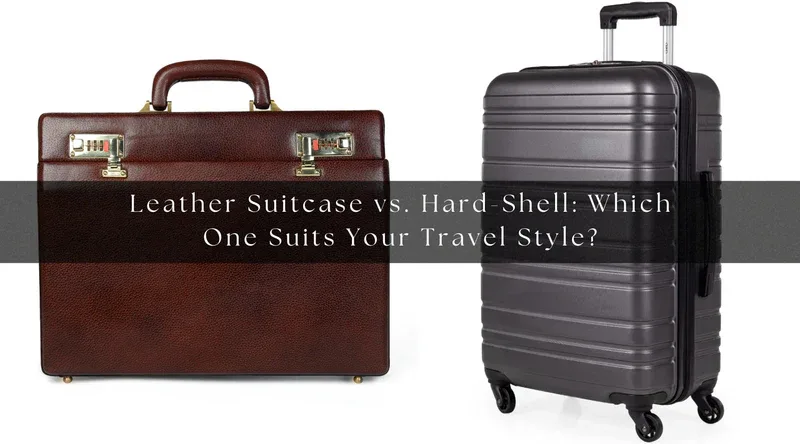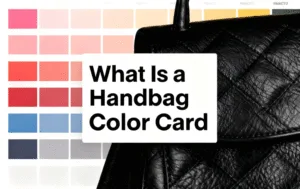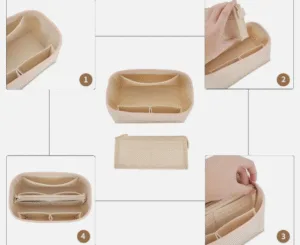Choosing between hard-sided leather luggage and soft-sided leather luggage is one of the most common dilemmas for modern travelers. Both types come with their own strengths in durability, design, and convenience, yet many people still wonder: which one is the better fit for their journey?
With so many options available today—ranging from lightweight luggage, large luggage, and trendy brands like Nobl luggage, Ricardo luggage, and Lucas luggage—finding the right piece can be overwhelming. Travelers are also paying more attention to practical add-ons, such as luggage straps, luggage covers, and compact underseat luggage for short trips, as well as long-term essentials like luggage repair services.
For those seeking premium aesthetics, collections like Quince luggage, Lojel luggage, or even family-friendly Disney luggage offer diverse choices. The key is understanding how hard-sided and soft-sided designs compare in terms of protection, weight, flexibility, and cost.
This blog will explain the differences in detail and guide you toward the best option for your needs. For brands and businesses, the discussion will also be helpful when working with professional leather luggage manufacturers or OEM/ODM luggage suppliers to create customized solutions.
Contents
What Is Hard-Sided Leather Luggage?
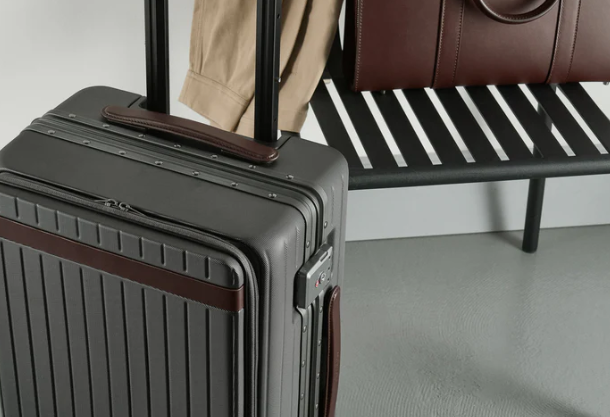
Hard-sided leather luggage refers to travel cases built on a rigid shell—typically made of polycarbonate, ABS, or aluminum—covered with premium leather. Compared to traditional soft cases, it delivers a more structured appearance, stronger protection, and a luxurious feel. This type of large luggage and lightweight luggage blends durability with elegance, making it highly sought-after in business and luxury travel markets.
Applications and Target Market
- Business Travel: Protects laptops, documents, and valuable devices during frequent flights.
- Airline Check-In: The rigid shell resists pressure, and when paired with luggage covers and luggage straps, it reduces scratches and wear during transit.
- High-End Consumers: Travelers who prioritize brand aesthetics and durability often choose collections such as Nobl luggage and Ricardo luggage.
Key Features & Benefits
- Structural Protection: Anti-crush and impact-resistant, ideal for fragile items.
- Water Resistance: Shells combined with leather coating prevent liquid penetration.
- Aesthetics & Branding: A rigid silhouette with leather trim conveys luxury and professionalism.
- Security: Typically equipped with TSA-approved locks, with some premium lines adding RFID protection.
Functional & Performance Requirements
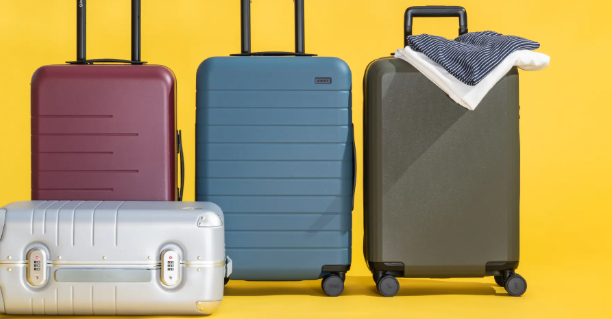
- Durability Testing: Hard cases should pass ≥5,000 open/close cycles to minimize luggage repair needs.
- Impact Resistance: Must withstand ≥200 lbs of pressure without cracks or deformation.
- Abrasion Resistance: Leather wrapping should endure ≥20,000 Martindale rub cycles for long-term use.
Aligning with Brand Positioning
- Minimalist Travelers: Matte black or metallic shells with subtle leather trims appeal to younger professionals.
- Luxury Brands: Full-grain leather, engraved zipper pulls, and custom hardware elevate designs similar to Quince luggage.
- Family Travel: Blending leather with playful elements can follow the inspiration of Disney luggage for a stylish yet approachable look.
Production & Supply Chain Considerations
- Cost & MOQ: Hard-sided leather luggage typically costs 30–50% more than soft models, so startups often collaborate with OEM luggage suppliers for flexible trial runs.
- Lead Time: Leather wrapping and plated hardware may extend production by an additional 2–3 weeks compared to standard soft luggage.
- Compliance & Sustainability: Choosing REACH, RoHS, and OEKO-TEX certified leathers and coatings ensures compliance with EU/US import regulations and improves ESG scores.
Use Case Examples
- Frequent Flyers: Prefer 20–24 inch hard-sided lightweight luggage that fits overhead bins while protecting fragile contents.
- Luxury Market: Brands use full-grain leather and handcrafted stitching on hard-sided frames to strengthen premium positioning.
Hard-sided leather luggage is a premium category that combines advanced protection with sophisticated design. For brands aiming to scale in global markets, partnering with experienced luggage manufacturers and OEM luggage suppliers is essential to ensure consistent quality, compliance, and customer appeal.
What Is Soft-Sided Leather Luggage?
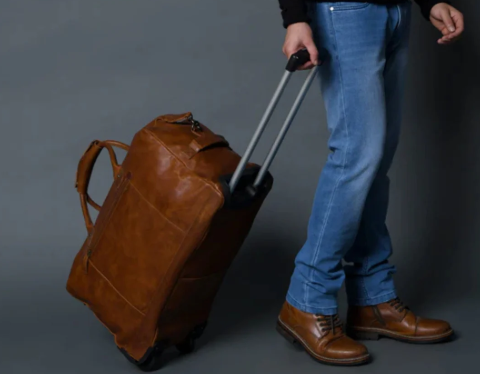
Soft-sided leather luggage is made from premium leather or a blend of leather with flexible fabrics such as nylon or polyester. Unlike rigid shells, it offers greater flexibility, lighter weight, and expandable capacity. Popular categories include underseat luggage, lightweight luggage, and hybrid models that combine leather with fabric for both elegance and practicality.
Intended Use and Target Market
- Frequent Travelers: Ideal for those who need more packing flexibility and quick access to essentials.
- Short Business Trips: A tote or compact leather carry-on can easily store laptops, documents, and personal items.
- Students and Casual Travelers: Versatile enough for backpacks for school or weekend getaways.
Key Features and Advantages
- Flexibility: Expanding compartments allow more capacity compared to hard-sided luggage.
- Lightweight: Easier to carry, making it suitable for large luggage alternatives where weight restrictions apply.
- Accessibility: Multiple pockets and compartments provide quick access to electronics and travel documents.
- Versatility: Works well as travel totes, shoulder bag messenger bags, or even convertible duffels.
Functional and Performance Considerations
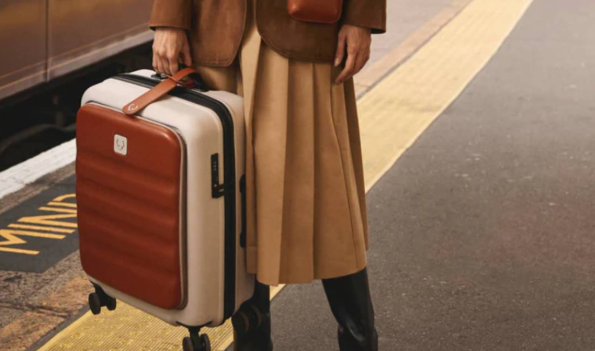
- Durability: Requires reinforced stitching and abrasion-resistant leather to withstand frequent use.
- Cycle Life: Zippers and handles should endure ≥ 5000 open/close cycles without failure.
- Maintenance: Easier to manage with professional luggage repair and conditioning treatments.
- Portability: Often equipped with add-ons like wheels, telescopic handles, and removable straps.
Alignment with Brand Positioning
- Minimalist Brands: Clean leather finishes with slim silhouettes appeal to professionals.
- Luxury Market: Enhanced with polished hardware, engraved zipper pulls, and handcrafted detailing.
- Youth & Lifestyle: Integrated designs like fanny pack, daypacks, or mesh laundry bags appeal to younger audiences.
Production and Supply Chain Considerations
- Cost Flexibility: Typically lower production cost than hard-sided models, making it attractive for startups.
- MOQ and Lead Time: Collaborating with OEM leather luggage manufacturers ensures small-batch flexibility (300–500 pcs) for seasonal or test collections.
- Private Label Options: Many private label luggage suppliers offer customized hardware, logo embossing, and packaging to elevate brand identity.
- Compliance: Eco-friendly materials such as recycled nylon or water-based coatings help brands meet RoHS, REACH, and OEKO-TEX standards.
Key Differences Between Hard-Sided and Soft-Sided Leather Luggage
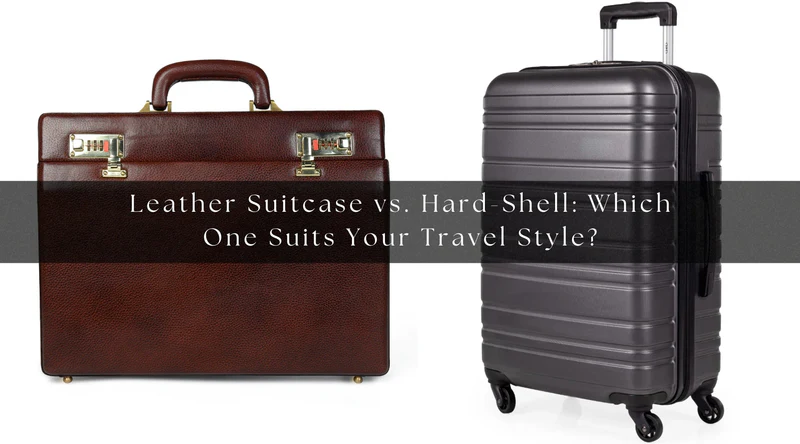
Choosing between hard-sided leather luggage and soft-sided leather luggage is an important decision for both travelers and brands. The choice affects durability, weight, capacity, security, and style, while also influencing overall travel convenience. Modern travelers look for lightweight luggage, large luggage, or even compact underseat luggage and totes for short trips. For brands and B2B buyers, understanding these differences is essential when working with OEM luggage suppliers or luggage manufacturers to create high-quality products with accessories like luggage straps, luggage covers, or RFID-protected compartments.
- Durability & Protection
Hard-sided luggage excels at resisting impacts, pressure, and scratches, making it ideal for fragile or valuable items during air travel. Travelers often pair it with luggage covers for extra protection. Soft-sided luggage, while more flexible, uses reinforced stitching and high-quality leather to provide long-lasting durability. Professionals and students using backpacks for school or totes also value soft-sided options for moderate protection with lighter weight. Both types can benefit from professional luggage repair services to maintain longevity. - Weight & Portability
Hard-sided leather luggage is typically heavier due to its rigid shell and reinforced corners, although premium models marketed as lightweight luggage help reduce carry weight. Wheels and telescopic handles improve portability but may add extra bulk. In contrast, soft-sided luggage is easier to carry and maneuver, making it suitable for short trips or urban commuting. Compact underseat luggage and leather totes provide additional convenience for travelers who prioritize portability without sacrificing style. - Capacity & Expandability
Soft-sided luggage offers superior expandability through gussets, extra pockets, and flexible walls, allowing travelers to pack additional items or shopping finds. Hard-sided luggage has fixed compartments, maintaining structure and organization, ideal for business travel with electronics and documents. Accessories like luggage straps and internal dividers can enhance capacity management in both luggage types, especially for brands aiming to offer functional solutions through OEM luggage suppliers. - Style & Aesthetic
Hard-sided leather luggage delivers a sleek, modern, and professional appearance, often preferred by luxury travelers. High-end collections such as Nobl luggage or Ricardo luggage demonstrate this polished aesthetic. Soft-sided luggage emphasizes classic craftsmanship, texture, and timeless design, often integrated into versatile totes or backpacks for school. Both styles can incorporate premium finishes, embossed logos, or custom hardware when produced by experienced luggage manufacturers. - Security
Hard-sided luggage generally provides better protection with TSA-approved locks, RFID compartments, and rigid shells that resist tampering. Soft-sided luggage may be less secure by nature but can include lockable zippers, hidden compartments, and RFID-blocking pockets to enhance safety. Modern travelers expect these features, especially for business trips or international flights. - Price Range
Hard-sided luggage often falls in the higher price tier due to its materials and manufacturing complexity. Soft-sided luggage offers a wider range of pricing, suitable for entry-level, mid-range, and premium markets. Both types can be customized via private label programs or through OEM luggage suppliers to match brand positioning, incorporating bespoke accessories like luggage straps, luggage covers, and protective hardware.
Pros and Cons of Hard-Sided and Soft-Sided Leather Luggage
Selecting the right type of leather luggage depends on travel habits, personal preferences, and brand considerations. Both hard-sided and soft-sided leather luggage have distinct advantages and disadvantages that affect durability, weight, capacity, security, and overall travel convenience. Understanding these pros and cons helps travelers make informed choices and brands collaborate effectively with OEM luggage suppliers or luggage manufacturers to meet market demands.
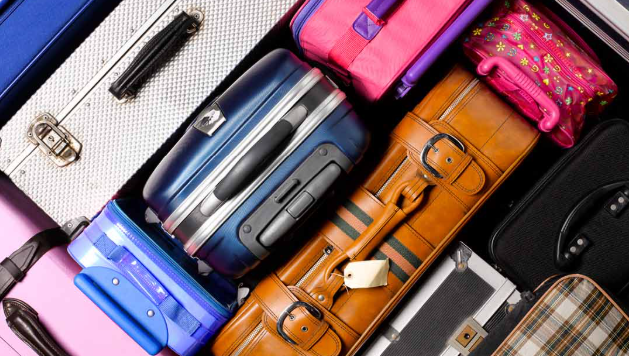
| Feature / Type | Hard-Sided Leather Luggage | Soft-Sided Leather Luggage |
|---|---|---|
| Pros | – Highly durable and impact-resistant, ideal for fragile items during travel (large luggage, lightweight luggage) – Water-resistant and secure, often featuring TSA-approved locks and reinforced corners (luggage straps, luggage covers) – Maintains shape and professional look for business or luxury travel (Nobl luggage, Ricardo luggage) |
– Lightweight and easy to carry (underseat luggage, totes) – Flexible and expandable capacity for extra packing (luggage covers, internal compartments) – Convenient for storage, short trips, or casual use (backpacks for school, weekend bags) |
| Cons | – Heavier and less portable – Limited packing flexibility – Higher price point |
– Less protective against impacts or pressure – More prone to scratches or wear – Requires reinforced stitching or professional luggage repair for long-term durability |
Both hard-sided and soft-sided leather luggage cater to different travel needs. Hard-sided luggage is ideal for travelers who prioritize protection, structure, and a professional appearance, while soft-sided luggage appeals to those seeking lightweight, flexible, and versatile solutions. From a B2B perspective, brands can leverage OEM luggage suppliers or luggage manufacturers to customize features such as luggage straps, luggage covers, RFID pockets, and modular compartments. Understanding these pros and cons ensures better product selection, enhances brand offerings, and satisfies diverse consumer preferences.
Which One Should Travel Brands Customize?
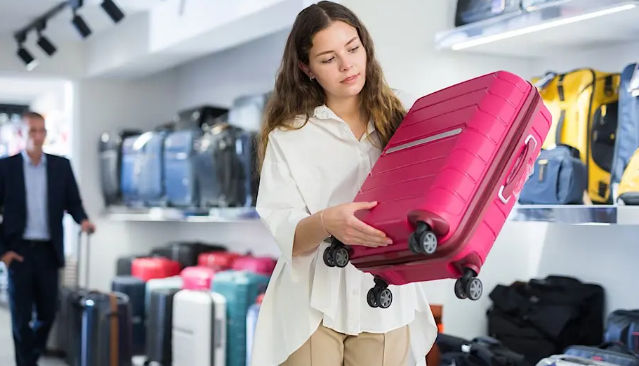
Choosing the right luggage type for your brand or business depends on the target traveler and travel scenario. Understanding these preferences helps brands collaborate effectively with OEM luggage suppliers or luggage manufacturers to create products that meet market demand while integrating high-value features such as luggage straps, luggage covers, or RFID-protected compartments.
- Frequent Flyers / Business Travelers → Hard-Sided Leather Luggage
Business travelers and frequent flyers often prioritize durability, security, and a professional appearance. Hard-sided luggage, including large luggage or premium lightweight luggage collections, offers superior protection for electronics, documents, and fragile items. Brands can add high-end finishes, TSA-approved locks, and modular compartments to appeal to this segment. - Leisure Travelers / Weekend Trips → Soft-Sided Leather Luggage
For casual travelers, weekend trips, or short getaways, soft-sided luggage provides lightweight portability and expandable capacity. Compact options like underseat luggage, leather totes, or backpacks for school offer convenience and versatility. Soft-sided luggage is easier to store and transport, making it ideal for customers seeking flexible, stylish travel solutions. - Luxury & Style-Oriented Buyers → Both Hard-Sided and Soft-Sided
Travelers focused on aesthetics and luxury may choose either type depending on personal preference. Hard-sided luggage showcases sleek, modern designs, while soft-sided luggage emphasizes classic craftsmanship and texture. Brands can differentiate their offerings by incorporating premium leather finishes, custom embossing, or unique accessories. Collaborating with experienced OEM luggage suppliers or luggage manufacturers ensures customization options meet high-end market expectations, from Nobl luggage to Ricardo luggage inspired designs.
By aligning product design with traveler needs, brands can develop luggage collections that balance durability, portability, style, and expandable functionality, ultimately boosting both consumer satisfaction and B2B sales potential.
Conclusion
The decision between hard-sided and soft-sided leather luggage depends on traveler needs, style preferences, and intended usage. Hard-sided luggage delivers maximum protection, structure, and security, making it ideal for business travelers, frequent flyers, or anyone transporting fragile items. Soft-sided luggage provides lightweight portability, flexible capacity, and convenient storage, perfect for weekend trips, casual travel, or students using backpacks for school.
For travel brands and B2B buyers, working with experienced OEM luggage suppliers or luggage manufacturers ensures products can be enhanced with high-value features such as luggage straps, luggage covers, RFID compartments, or modular inserts. This enables brands to offer a complete range of lightweight luggage, large luggage, underseat luggage, and stylish totes, meeting diverse consumer expectations while strengthening market competitiveness.
By evaluating traveler needs and customizing accordingly, brands can deliver luggage collections that combine durability, functionality, and style, providing a premium travel experience for modern consumers.

